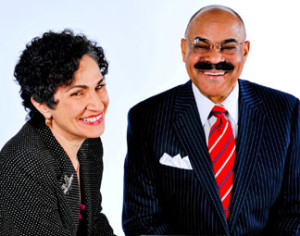
FUNdraising Good Times
Where will the funding come from?
How will you meet your fundraising goal in 2017? This question typically elicits one of three responses. Some are confident they will be able to secure the funds their organization needs. Others have a general feeling about where the money and resources will come from. Still others are used to making do and believe they will survive one way or the other. Where does your nonprofit fall on this spectrum of responses?
Managing the fundraising process throughout the year can help reduce year-end “surprises.” With this column we offer three suggestions to support your fundraising.
First, set your annual fundraising goal. How much do you need to raise? This should be set by the board based on information presented by the executive director and finance director. Working with a specific goal means you can track your progress.
Once you know your goal, consider where the funds could come from. For example, you may expect to meet your goal with funds from four sources: special events, foundation grants, individual gifts, and online giving. In this case, you need to put numbers against each revenue stream. This takes work. Look at where your revenue came from in the prior year, and what you know about whether or not you can expect that revenue to sustain, decrease or increase.
For example, in the last year you may have raised $200,000 from special events, $400,000 in foundation grants, $200,000 in gifts from individuals, and $60,000 in online giving. Meeting with your staff and members of the board development committee you should look at exactly where that money came from last year. When looking at special events revenue you may want to ask questions such as: did the majority of revenue come from sponsorships, ticket sales, or gifts made at the event? Did we have multiple sponsors? Will all our sponsors come back this year? Can we expect to repeat revenue from ticket sales and gifts made the day of the event? Can we sustain our special event revenue? Look closely at the numbers as you plan. Don’t assume 20% growth if you can’t support the calculation.
When looking at gifts from individuals, review who gave last year and at what level. Can you reasonably expect they would repeat their giving? Which gifts do you believe were one-time gifts? You need to identify actual potential donors and then determine the best way to approach each.
In general we encourage organizations to identify a pool of prospective donors, sponsors and funders who can collectively give three-times the fundraising goal. This is important because not every person or institution you approach will actually give. That doesn’t necessarily mean they don’t support your organization, it may be that this year is simply not the right time for them to give.
Using a 3:1 ratio of prospective donors to actual gifts/grants can keep your team focus on communicating with a large enough pool of people to ensure you can meet your goal. Copyright 2017 – Mel and Pearl Shaw
Mel and Pearl Shaw are authors of four books on fundraising available on Amazon.com. For help growing your fundraising visit www.saadandshaw.com or call (901) 522-8727.
